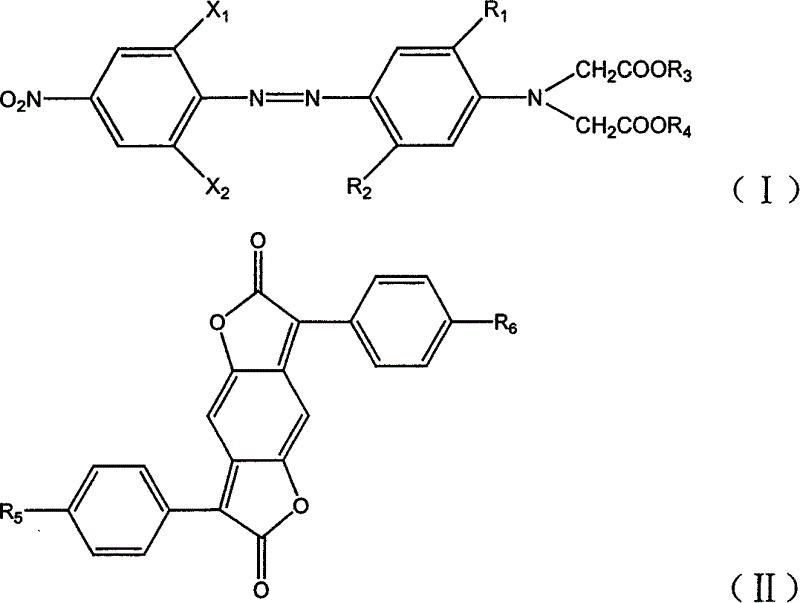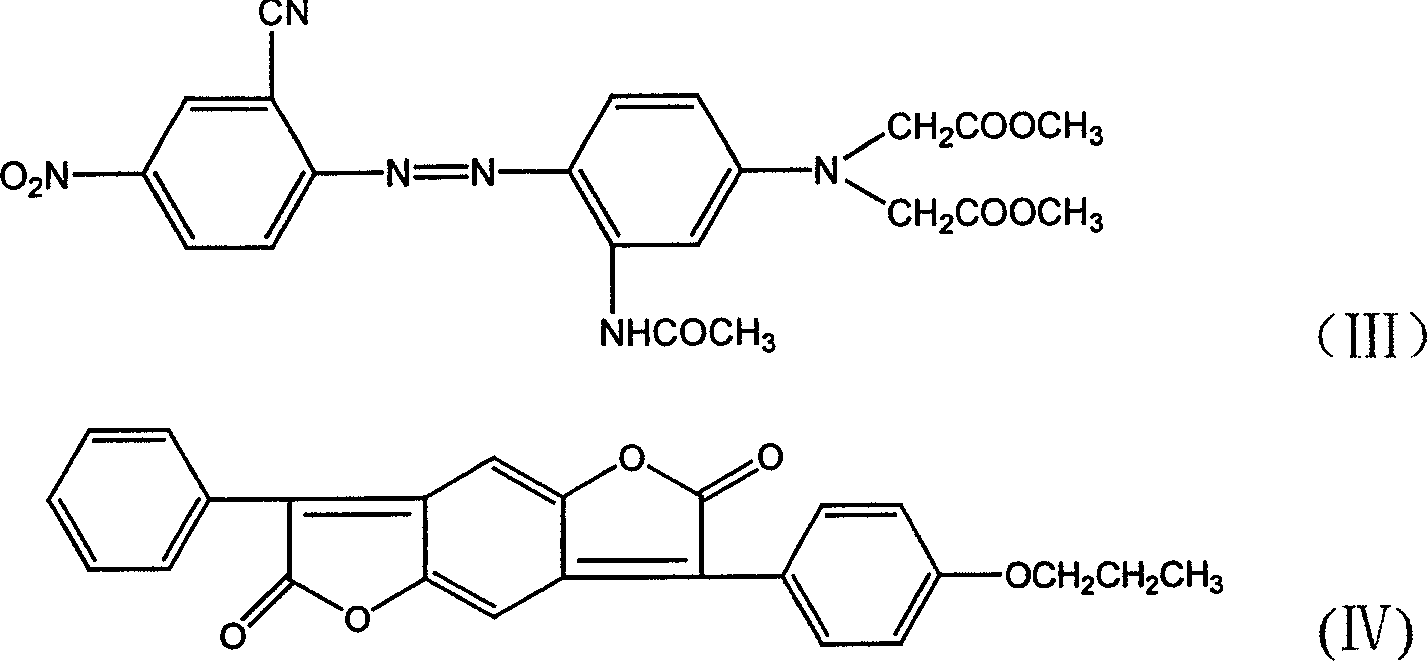Dispersed red dye composition
A technology of dye composition and disperse red, which is applied in the direction of organic dyes, etc., and can solve problems such as inability to meet dyeing needs
- Summary
- Abstract
- Description
- Claims
- Application Information
AI Technical Summary
Problems solved by technology
Method used
Image
Examples
Embodiment 1
[0022] 30 grams of dye A shown in formula (III), 20 grams of dye B shown in formula (IV), 60 grams of dispersant Reax 83A, and 135 grams of pure water are micronized with a sand mill (doing dispersion treatment), Then spray dry to obtain the disperse red dye composition.
Embodiment 2~10
[0024] According to the preparation method of Example 1, the structures of dyes A and B defined by each substituent are shown in Table 1, and the dye composition is blended with dye A and dye B according to the metering data shown in Table 2.
[0025] Example
[0026]
Embodiment 11
[0028] Take 0.5 grams of the disperse dyes prepared in Examples 1 to 10 and disperse them in 500 milliliters of water, absorb 20 milliliters and mix them with 60 milliliters of water, adjust the pH of the dyeing bath to 5 with acetic acid, heat up to 70°C and put 2 grams of poly The polyester fiber is dyed, and the temperature is raised from 70°C to 130°C within 30 minutes, kept at a temperature of 40 minutes, and the sample is taken when it is cooled to 90°C. The color fastness is measured by the national standard GB / T3921-1997, GB / T3920-1997, GB / T5718-1997. The test results are shown in Table 3.
[0029]
[0030] Example 4
PUM
 Login to View More
Login to View More Abstract
Description
Claims
Application Information
 Login to View More
Login to View More - R&D Engineer
- R&D Manager
- IP Professional
- Industry Leading Data Capabilities
- Powerful AI technology
- Patent DNA Extraction
Browse by: Latest US Patents, China's latest patents, Technical Efficacy Thesaurus, Application Domain, Technology Topic, Popular Technical Reports.
© 2024 PatSnap. All rights reserved.Legal|Privacy policy|Modern Slavery Act Transparency Statement|Sitemap|About US| Contact US: help@patsnap.com










